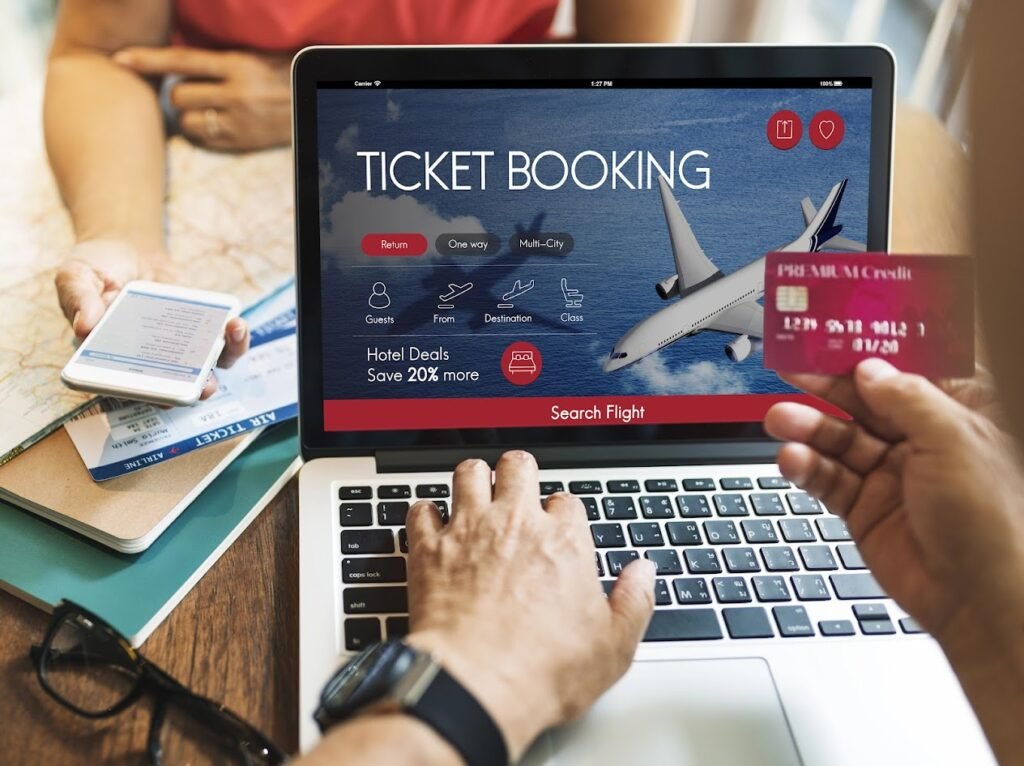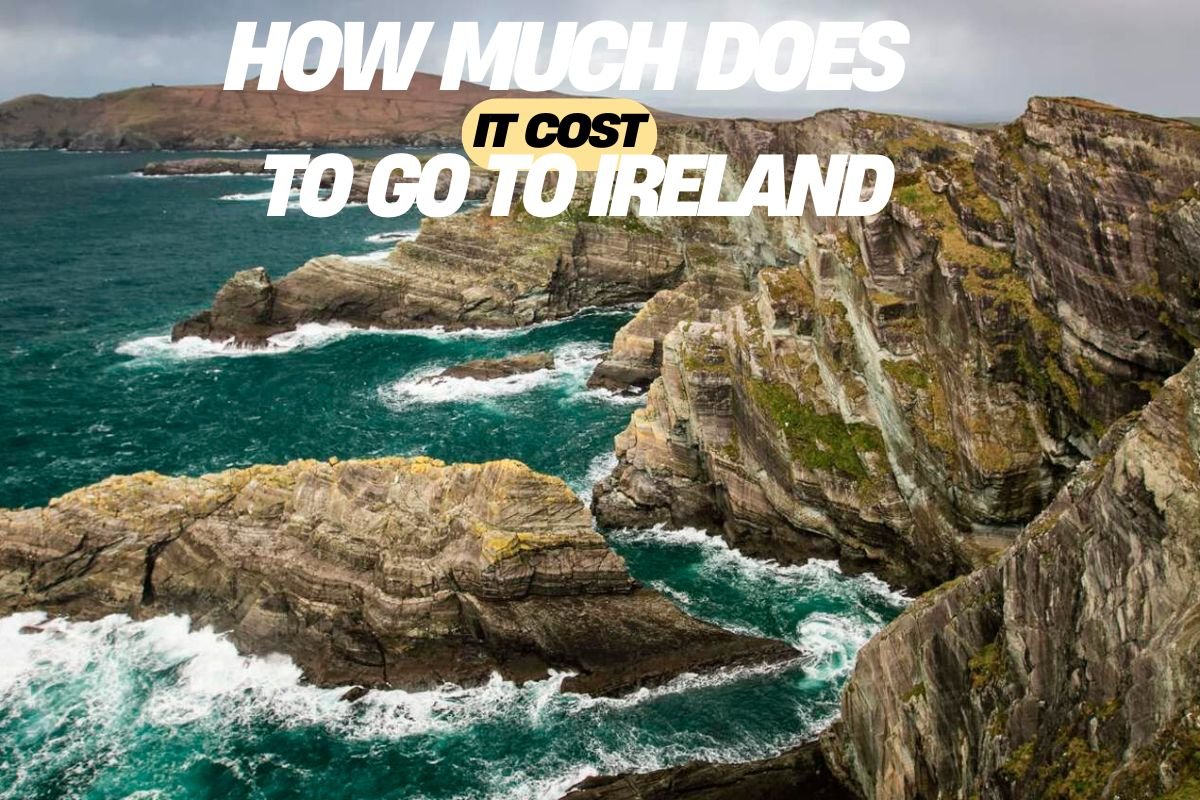Ireland is a beautiful destination known for its green countryside, dramatic coastlines, charming towns, and warm, welcoming people. Whether you’re interested in history, nature, music, or just want to enjoy the scenic views, Ireland has something for every kind of traveler.
Before you pack your bags, it’s smart to have a clear idea of how much your trip might cost. Planning your budget in advance can help you make the most of your visit—whether you’re traveling on a tight budget or looking for a more luxurious experience. It can also help you avoid surprise expenses once you arrive.
In this blog, we’ll walk you through what it typically costs to travel to Ireland in 2025. We’ll break it down by category: flights, accommodation, food and drink, transportation, attractions, and other helpful tips.
Whether you’re planning a short getaway or a two-week adventure, this guide will help you estimate your costs and plan wisely.
Average Cost of a Trip to Ireland (Summary Table)
Here’s a quick snapshot of what you can expect to spend each day depending on your travel style:
| Category | Budget Traveler | Mid-Range | Luxury |
| Flights | $400–$700 | $700–$1,200 | $1,200+ |
| Accommodation | $30–$70 per night | $100–$200/night | $300+/night |
| Food & Drink | $15–$30 per day | $40–$70/day | $100+/day |
| Local Transport | $10–$25 per day | $30–$60/day | Private driver |
| Attractions | $10–$20 per day | $30–$50/day | $70+/day |
Flights to Ireland

Getting to Ireland is one of the biggest costs of your trip, especially if you’re flying from outside Europe. Here’s what you can expect when it comes to airfare in 2025.
Average Flight Prices by Region
- From the U.S.: Round-trip flights from major cities like New York, Chicago, or Boston to Dublin usually range from $500 to $900, depending on the season and how early you book.
- From Canada: Flights from Toronto or Vancouver range between $600 to $1,000.
- From the UK: A quick hop across the water can cost as little as $50 to $150, especially with budget airlines.
- From Europe: If you’re flying from cities like Paris, Berlin, or Madrid, expect to pay $80 to $250 round-trip with low-cost carriers.
Best Time to Book Flights

To get the best deals, aim to book your flight about 2–4 months in advance. Traveling during the shoulder seasons—spring (April–May) or early fall (September–October)—can also lead to lower prices and fewer crowds.
Main Airports in Ireland
- Dublin Airport (DUB): The largest and busiest, great for international arrivals.
- Shannon Airport (SNN): Located on the west coast, ideal for visiting Galway, Limerick, or the Cliffs of Moher.
- Cork Airport (ORK): Serves the south and is great if you plan to explore Ireland’s scenic coastal routes.
Budget Airlines vs Full-Service
If you’re traveling from Europe, budget airlines like Ryanair and Aer Lingus often have cheap fares, but be aware of extra fees for baggage and seat selection. For long-haul flights from North America, full-service carriers like Delta, United, and Aer Lingus may offer better value with meals, entertainment, and checked bags included.
Accommodation Costs
Ireland offers a wide range of places to stay, from cozy hostels to luxurious countryside resorts. Where you stay—and how much you spend—will depend on your comfort level and your travel style.
Price Breakdown by Region
- Dublin: Being the capital, Dublin is the most expensive place to stay. Expect to pay $120–$200 per night for a mid-range hotel and $300+ for luxury accommodations.
- Smaller Cities (e.g., Galway, Cork): Mid-range hotels cost around $90–$150 per night.
- Countryside & Villages: You’ll find charming B&Bs and guesthouses from $50–$100 per night, often with breakfast included.
Types of Accommodations
- Hostels: Great for solo or budget travelers, with dorm beds ranging from $30–$50 per night.
- B&Bs (Bed & Breakfasts): A popular and affordable option, usually family-run with a homey feel.
- Hotels: Mid-range hotels typically cost $100–$200/night, offering comfortable rooms and good locations.
- Luxury Hotels & Castles: For a unique experience, you can even stay in a castle hotel—but it comes with a price tag of $300+ per night.
Money-Saving Tips
- Book early, especially during peak summer months (June–August).
- Consider Airbnb or other vacation rental platforms for longer stays or group trips.
- Travel during the off-season or shoulder season (spring and fall) to find lower rates and better availability.
- Look for stay-and-tour packages offered by local tourism boards or travel agencies.
Food & Drink Prices
Eating in Ireland can be affordable, especially if you mix casual dining with local favorites and supermarket snacks.
Daily Food Costs
- Budget Travelers: If you stick to supermarkets, bakeries, and convenience stores, you can spend as little as $15–$30 per day.
- Mid-Range Travelers: A mix of casual restaurants, pubs, and coffee shops can cost around $40–$70 per day.
- Luxury Travelers: Upscale restaurants and fine dining experiences will push your food costs to $100+ per day.
Typical Meal Prices
- Irish Stew: A hearty, comforting dish made with lamb or beef, root vegetables, and herbs – around $12–$20 at most pubs.
- Fish and Chips: Freshly battered fish with thick-cut fries, served with mushy peas or tartar sauce – around $10–$15.
- Full Irish Breakfast: Includes eggs, sausage, bacon, black pudding, baked beans, toast, and grilled tomato – typically $10–$18.
Drinks & Treats
- Coffee: A cup of coffee costs around $3–$5, depending on the café.
- Pint of Guinness: Expect to pay around $5–$7, depending on the city or pub.
- Whiskey Tasting: Tours and tastings at famous distilleries like Jameson or Bushmills range from $20–$35, often including samples.
Dining at pubs is a great way to enjoy local food in a cozy setting without overspending.
Transportation Within Ireland

Getting around Ireland is fairly easy, whether you use public transportation, rent a car, or join a guided tour.
Public Transport
Ireland has a good network of buses and trains that connect major cities and towns.
- Bus Tickets: Local buses cost $2–$5, while intercity routes (like Dublin to Galway) can range from $15–$30 one way.
- Train Tickets: Prices vary based on distance but usually range from $20–$50 per trip.
- Travel Passes: You can save money with multi-day passes like the Leap Card in Dublin or Irish Rail’s Explorer Pass for longer journeys.
Rental Cars
If you want to explore rural areas, coastal routes, or the Wild Atlantic Way, renting a car offers the most flexibility.
- Daily Rental Costs: Expect to pay $40–$80 per day, depending on the vehicle type and season.
- Insurance: Make sure to check what’s included—collision damage waivers and excess coverage may be extra.
- Driving Tips: In Ireland, they drive on the left side of the road. Roads in rural areas can be narrow, so go slow and stay alert.
Other Options
- Ride-Sharing: Services like Free Now (Ireland’s version of Uber) operate in larger cities like Dublin and Cork.
- Guided Tours: For day trips to popular spots like the Cliffs of Moher or the Ring of Kerry, consider joining a small-group tour. Prices typically range from $40–$90 for a full-day trip, often including transportation and a guide.
Ireland’s transportation is easy to navigate, and you can choose the best option based on your route, time, and budget.
Attractions & Tours
Ireland is full of must-see sights, from ancient castles to stunning natural landscapes. While many top attractions charge entry fees, there are also plenty of free experiences to enjoy.
Entry Fees for Popular Attractions
- Cliffs of Moher: Around $8–$12 USD for access to the visitor center and viewing platforms.
- Guinness Storehouse (Dublin): Entry starts at $22–$30, depending on the experience and whether you book in advance.
- Blarney Castle: Famous for the Blarney Stone – tickets are about $20 USD.
- Kilmainham Gaol (Dublin): A fascinating historical site with tickets around $10 USD.
- Museums: Many national museums in Ireland, like the National Museum of Ireland, offer free entry.
Guided Tours & Unique Experiences
- Celtic Music or Irish Dance Nights: Expect to pay around $25–$40, often including dinner.
- Game of Thrones Filming Tours (Northern Ireland): Guided experiences cost $40–$90 depending on the route and inclusions.
- Walking Tours: City walking tours or ghost walks usually range from $10–$20. Some are even tip-based.
Free Attractions Worth Visiting
- National Parks: Places like Killarney National Park and Wicklow Mountains are free to enter and offer beautiful hiking trails and lakes.
- Scenic Drives: The Ring of Kerry and Causeway Coastal Route are world-famous drives that cost nothing—just fuel and time.
- Historic Towns: Explore charming places like Doolin, Kilkenny, or Dingle at your own pace.
With a good mix of paid and free attractions, it’s easy to balance your budget while still having a rich experience in Ireland.
Other Expenses to Consider
When planning your trip to Ireland, there are a few additional costs to keep in mind beyond just flights and hotels.
Travel Insurance
Travel insurance is highly recommended, especially for international visitors. It can cover medical emergencies, flight cancellations, or lost luggage. Policies typically cost $40–$80 for a week, depending on coverage and age.
SIM Card or eSIM for Mobile Data
Staying connected is important, especially for using maps, translation apps, and staying in touch.
Instead of buying a local SIM card after arrival, consider using an eSIM from Pirate Mobile.
- No need to swap cards or visit a store
- Instant activation
- Affordable data packages starting from just $4.99
- Works seamlessly with your phone so you’re ready to explore from the moment you land
Pirate Mobile makes it easy to stay online throughout your trip without the hassle or roaming fees.
Souvenirs & Shopping
Ireland has plenty of charming souvenirs:
- Wool sweaters, scarves, and hats
- Handcrafted pottery or Celtic jewelry
- Locally made whiskey or chocolate
Budget around $20–$100, depending on what you want to bring home.
Tipping in Ireland
Tipping isn’t mandatory, but it’s appreciated for good service:
- Restaurants: 10–15% if a service charge isn’t already included
- Taxis: Round up to the nearest euro
- Tours/Guides: A small tip of €5–€10 is polite for guided tours
Budgeting Tips for Ireland
Ireland can be explored on almost any budget with the right planning. Here are some practical ways to save money on your trip without missing out on the fun:
Travel During the Shoulder Season
The best time to visit Ireland on a budget is during the shoulder seasons—spring (April–May) and fall (September–October).
- You’ll enjoy milder weather, fewer crowds, and lower prices on flights and accommodations.
- Tourist attractions are still open, but the rush of summer visitors has calmed down.
Book in Advance
Planning ahead can lead to real savings:
- Flights: The earlier you book, the better your chances of getting affordable fares.
- Hotels & B&Bs: Prices go up closer to travel dates, especially in popular areas like Dublin or Galway.
- Attractions: Many sites offer online booking discounts or skip-the-line access.
Use City Discount Passes
If you’re visiting Dublin or another major city, look into tourist discount cards like the Dublin Pass:
- Free entry to multiple attractions
- Fast-track access to busy spots
- Discounts at restaurants and shops
- Public transport perks may be included
These passes can save you money and time if you plan to visit several paid attractions.
Save with Meal Deals and Free Activities
You don’t need to spend a fortune to enjoy Irish food or entertainment:
- Look out for pub lunch deals or set menus that offer great value.
- Supermarkets and convenience stores like Tesco, Aldi, or Centra often sell fresh, affordable food for picnics or quick meals.
- Join free walking tours, explore national parks, and enjoy local markets for cultural experiences without high costs.
Final Words
Ireland is a destination that suits all kinds of travelers. Whether you’re exploring the busy streets of Dublin, relaxing in a quiet village, or driving along the stunning coast, there’s something for everyone.
With some smart planning, you can enjoy a great trip without spending too much. Traveling during the shoulder season, booking things in advance, and choosing free or low-cost activities can help you stay on budget while still making the most of your time.
Staying connected while traveling also makes things easier. With Pirate Mobile’s Ireland eSIM, you can have mobile data ready before you even arrive. No need to search for a local SIM or deal with high roaming fees. Just scan the QR code, activate your plan, and you’re ready to go.
Ireland is full of charm, beauty, and unforgettable moments. With a little preparation, your visit can be both affordable and amazing.
You have not enough Humanizer words left. Upgrade your Surfer plan.
Frequently Asked Questions (FAQs)
Is Ireland expensive to visit?
Ireland can be moderately expensive, especially in cities like Dublin. However, with good planning, it’s possible to visit on a budget using affordable transport, accommodations, and free attractions.
How much money should I bring to Ireland for a week?
It depends on your travel style:
- Budget traveler: around $600–$900 USD
- Mid-range traveler: $1,200–$1,800 USD
- Luxury traveler: $2,500+ USD
This includes flights, lodging, food, and activities.
What’s the cheapest time to travel to Ireland?
The cheapest months are typically January to March and November, when flight and hotel prices drop. However, traveling in April, May, or September offers a good balance of lower costs and decent weather.
Are euros used in all parts of Ireland?
The Republic of Ireland uses the euro (€). If you’re visiting Northern Ireland, which is part of the UK, they use the British pound (£). It’s good to carry both if you’re crossing borders.
Can I travel Ireland on a budget?
Yes! With hostels, public transport, free walking tours, and smart planning, Ireland is definitely doable on a budget. Avoid peak travel times, cook some of your own meals, and take advantage of the many free outdoor and cultural activities
